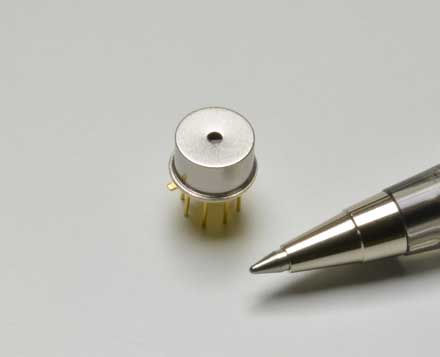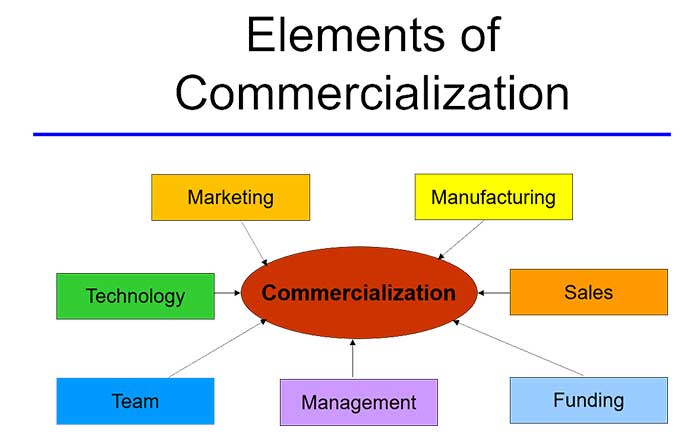| sponsor |
 |
|
Quantum Effect Changes Direction of Light Waves
In a variation of the magneto-optical effect, special materials called “topological insulators” (TI) demonstrated the ability to switch the direction of a light wave in clearly defined quantum leaps rather than continually. This “quantized magneto-electric effect” could open up new and highly accurate methods of measurement. The extent of these quantum steps was found to depend solely on fundamental physical parameters.
|
|
|
|
|
|
Persistent Photoconductivity Used to Control Semiconductor Cells
Use of light to alter the conductivity of semiconductor material could provide a new way to control cell behavior on semiconductors used for bioelectronics. The approach draws on persistent photoconductivity, a phenomenon that causes some materials to become much more conductive when light is shined on them. When conductivity in these materials is elevated, the charge at the surface of the material increases.
|
|
|
|
|
|
VTT Project Develops Solar Energy Production Concept
The COMBO-CFB project led by VTT Technical Research Centre of Finland Ltd. has developed an innovative concept to increase solar energy production in the energy system. According to its research, the concept can reduce fuel consumption and emissions stressing the climate by more than 33 percent.
|
|
|
|
|
|
Light Exposure in the Evening Improves Sports Performance
A new study shows that athletes who are exposed to blue light before competing can significantly improve their end performance. Researchers at the University of Basel’s Department of Sport, Exercise and Health investigated whether light exposure before a cycling time trial could compensate for the time of day the event was held.
|
|
|
|
|
|
Merck, University of Leeds to Collaborate on Liquid Crystal Technologies Read Article
Zecotek, Shanghai EBO Establish Chinese Subsidiary Read Article
IPG Photonics Acquires OptiGrate Corporation Read Article
Jordan’s SESAME Inaugurated by King Abdullah II Read Article
Osram Licht Acquires Agrilution Stake Read Article
|
|
|
|
 MEMS-FPI Sensors Detect NIR Spectra
MEMS-FPI Sensors Detect NIR Spectra
Hamamatsu Corporation
Hamamatsu’s MEMS-FPI spectrum sensors (C13272 series) are a more compact and less expensive option for measuring NIR spectra than a multichannel detector and associated optics. These sensors consist of an InGaAs PIN photodiode and a miniature Fabry-Perot interferometer (FPI) that scans through a range of NIR wavelengths from 1550 nm to 1850 nm. The FPI is fabricated using MEMS (micro-electro-mechanical systems) technology.
Visit Website
Request Info
|
|
|
 Successful Advanced Technology Commercialization for Everyone!
Successful Advanced Technology Commercialization for Everyone!
Photonics Media
A new, 12-lecture course from successful scientist-turned-businessman David Krohn will show you how to identify market opportunities and develop a roadmap for successful commercialization. Commercialization of Innovative Technology through Entrepreneurship – CITE – demonstrates how to move advanced technology into successful commercial products, and gives you a current view of just what investors are funding.
Visit Website
Request Info
|
|
|
|
|
|
Optical Interconnects Conference 2017
June 5-7, 2017 - Hilton Santa Fe Historic Plaza - Santa Fe United States
The sixth IEEE Photonics Society Optical Interconnects Conference seeks to facilitate the collaboration required to drive new interconnect architectures and technologies from concepts in research labs to commercial realities. The conference will cover the complete spectrum of high performance interconnect challenges in network systems, architectures, applications, subsystems and devices. Topics that will be addressed include the pros & cons of on-board optics in datacenter hardware and how the need for 100Gb/s will be met in backplanes and chip-to-chip. System architects, programmers and anyone researching the interconnect role in a more self-aware next generation platform will benefit by attending this conference.
|
|
|
|
International Surface Imperfection Standard
Thu, Jun 8, 2017 1:00 PM - 2:00 PM EDT
Presenter Dave Aikens will clarify the role of "scratch and dig," a method for specifying and inspecting optics for imperfections by visually comparing imperfections to a set of pre-made and certified scratch samples to determine the grade. Although the "scratch and dig" method is used broadly in the industry, it is an approach that is often misunderstood and applied incorrectly. Since 1945, MIL-PRF-13830B has been used as the standard for surface imperfections specification and measurement throughout the world. Increasingly demanding applications have been making this standard obsolete. Now the optics industry has a choice of which standard to use, and it's not always clear which is the best path. Aikens will address this issue and the factors to consider regarding each potential option. Aikens is president and founder of Savvy Optics Corp. and has been involved in optics drawings and specifications for over 30 years.
|
|
|
|
 |
|
|
|

CALL FOR ARTICLES!
Photonics Media is currently seeking technical feature articles on a variety of topics for publication in our magazines (Photonics Spectra, Industrial Photonics, BioPhotonics and EuroPhotonics). Please submit an informal 100-word abstract to Managing Editor Michael Wheeler at Michael.Wheeler@Photonics.com, or use our online submission form.
|
|
|
|